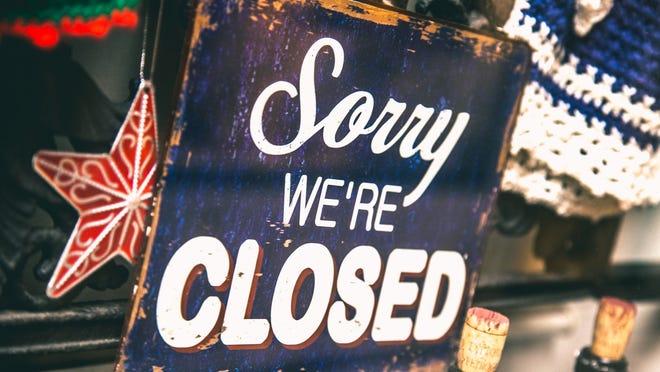[ad_1]
U.S. economic growth slowed from its record pace in the fourth quarter as consumers reined in spending amid COVID-19 surges and a fresh round of business lockdowns.
For all of 2020, the economy shrank for the first time since 2009, during the final year of the Great Recession, and at the fastest pace since just after World War II.
The pullback by households late last year offset strong business investment and stockpiling, as well as a roaring housing market.
The nation’s gross domestic product, the value of all goods and services produced in the U.S., increased at a seasonally adjusted annual rate of 4% in the October-December period, the Commerce Department said Thursday. Economists surveyed by Bloomberg had forecast a 4.2% rise in GDP.
Fed stands pat:Fed keeps key interest rate near zero, maintains $120B in monthly bond purchases to hold down long-term rates
For the full year, the economy contracted by 3.5%, the sharpest annual drop since 1946.
The 4% fourth-quarter gain was solid by historical standards but it masks weakness late in the period as coronavirus cases hit records and states reinstated business restrictions, including banning indoor dining and limiting capacities. Employers shed 140,000 jobs in December, with restaurants and bars laying off nearly 500,000 workers, Labor Department figures show.
The slowdown followed a worst-ever 31.4% annualized drop in output in the second quarter as states shut down malls, restaurants and other outlets and a record 33.4% advance in the third quarter as most businesses reopened. But spikes in the outbreak have made for an uneven recovery, and after recovering about 75% of its COVID-19-induced losses, economic output is still about 2.5% below its pre-pandemic level.
Analysts generally foresee a bleak winter for the economy despite the recent rollout of a coronavirus vaccine as COVID-19 cases remain high. Economists surveyed by Wolters Kluwer Blue Chip Economic Indicators predict growth of  2.3% at an annual rate in the current quarter, according to their average estimate, but some expect GDP to flatline or even dip.
The $900 billion relief package passed by Congress is expected to cushion the blow by providing more aid to the unemployed and struggling small businesses and $600 checks to most individuals.
The rough patch is expected to give way to stronger growth by spring as a coronavirus vaccine becomes widely available and consumer spending picks up. Also, President Biden is proposing another $1.9 trillion relief measure, at least some of which is expected to pass. The economists surveyed forecast the economy will grow 4.2% in 2021, which would be the largest gain since 1999.
Consumer spending rises more slowly
Consumer spending rose 2.5% following a record 41% jump in the third quarter. Consumption recovered through the summer as restaurants promoted outdoor dining but has flagged late in the year amid colder weather and new lockdowns. Retail sales fell for the third straight month in December.
Consumer spending makes up about 70% of economic activity.
Business investment surges again
Business investment climbed 13.8% following a 22.9% jump the prior quarter, which was the largest quarterly increase since 1983.
Spending on equipment such as computers and factory equipment shot up 24.9%, down from 68.2% the previous quarter. Outlays on buildings, oil rigs and other structures grew 3%.
Many firms are buying technology for employees to work remotely, and manufacturers are upgrading factory equipment as consumers snap up electronics and other goods for the home and companies replenish depleted inventories.
Companies add to inventories
Businesses continued to restock after drawing down inventories early in the pandemic amid sharply reduced demand, contributing more than a percentage point to the increase in GDP.

[ad_2]





